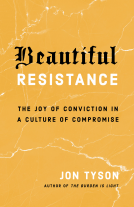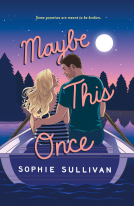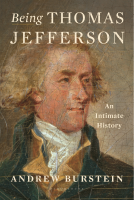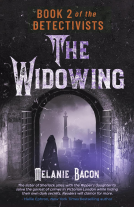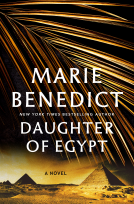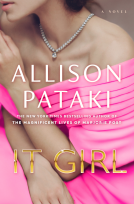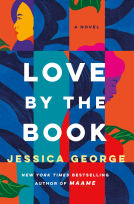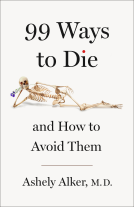
Justice in Plain Sight
How a Small-Town Newspaper and Its Unlikely Lawyer Opened America's Courtrooms
by Dan Bernstein
This title was previously available on NetGalley and is now archived.
Send NetGalley books directly to your Kindle or Kindle app
1
To read on a Kindle or Kindle app, please add kindle@netgalley.com as an approved email address to receive files in your Amazon account. Click here for step-by-step instructions.
2
Also find your Kindle email address within your Amazon account, and enter it here.
Pub Date Jan 01 2019 | Archive Date Jan 31 2019
Talking about this book? Use #JusticeInPlainSight #NetGalley. More hashtag tips!
Description
Justice in Plain Sight is the story of a hometown newspaper in Riverside, California, that set out to do its job: tell readers about shocking crimes in their own backyard. But when judges slammed the courtroom door on the public, including the press, it became impossible to tell the whole story. Pinning its hopes on business lawyer Jim Ward, whom Press-Enterprise editor Tim Hays had come to know and trust, the newspaper took two cases to the U.S. Supreme Court in the 1980s. Hays was convinced that the public—including the press—needed to have these rights and needed to bear witness to justice because healing in the aftermath of a horrible crime could not occur without community catharsis. The newspaper won both cases and established First Amendment rights that significantly broadened public access to the judicial system, including the right for the public to witness jury selection and preliminary hearings.
Justice in Plain Sight is a unique story that, for the first time, details two improbable journeys to the Supreme Court in which the stakes were as high as they could possibly be (and still are): the public's trust in its own government.
Advance Praise
“Dan Bernstein’s new book disproves two stereotypes about history: First, that it’s made only by the famous, and second, that it’s boring. This is a tale of small-town heroes, newspaper professionals, and lawyers. . . . In Dan’s capable hands, it’s smart, funny, and above all, enlightening.”—George Rodrigue, two-time winner of the Pulitzer Prize and president and editor of the Cleveland Plain Dealer
“I simply loved Justice in Plain Sight. It is like a fairy tale with a landscape populated by now-extinct beasts. . . . For those who want to understand what journalism can mean to a community, here’s a well-told story of a very good newspaper.”—Donald E. Graham, former publisher of the Washington Post
“As courts and the media today face political criticism and threats, Bernstein’s story of the paper’s landmark victories is a timely reminder of how crucial public access is to the integrity of our judicial system.”—Marcia Coyle, chief Washington correspondent of the National Law Journal and author of The Roberts Court: The Struggle for the Constitution
“A suspenseful, true-life legal page-turner about honest men and women standing up for freedom. A thoroughly compelling and engaging read.”—Jonathan Eig, New York Times best-selling author of Ali: A Life
“The doors of America’s courtrooms are open today because one small newspaper in California refused to let justice take place in secret. Justice in Plain Sight is a long-overdue look at the legal fight that changed the history of the First Amendment.”—David E. McCraw, vice president and deputy general counsel, the New York Times Company
“This book, which tells the highly interesting story behind two Supreme Court precedents, has it all: heinous crimes, protective judges, dogged journalists, skilled local lawyers, captious Supreme Court justices, and a very fortunate public that, thanks to the Press-Enterprise, secured a First Amendment right to attend jury selection and preliminary hearings.”—James T. Hamilton, Hearst Professor of Communication at Stanford University
“Dan Bernstein has written a wonderful account of two landmark Supreme Court cases that established the right of the press and the public to attend key phases of criminal court proceedings. Meticulously researched and beautifully written, Bernstein’s book tells the fascinating story behind these key First Amendment decisions.”—Erwin Chemerinsky, dean and Jesse H. Choper Distinguished Professor of Law at the University of California, Berkeley School of Law
“During the 1970s and 1980s, the U.S. Supreme Court made public access to criminal court proceedings a constitutional right. . . . Justice in Plain Sight documents the struggle to achieve those rights and adds to the public’s understanding of what makes the American justice system the most transparent and trusted system in the world.”—Lucy Dalglish, dean of Phillip Merrill College of Journalism at the University of Maryland
“It is hard to believe that thirty years ago, courts closed their doors to the press in criminal court proceedings. Dan Bernstein, armed with local knowledge and extensive research, weaves a gripping narrative of how that changed. His story is filled with high constitutional principles, colorful characters, and frequent peeks behind the scenes at the Supreme Court of the United States, where the legal landscape changed thanks to the determination of a small local newspaper publisher.”—Dennis J. Hutchinson, William Rainey Harper Professor in the College and senior lecturer in law at the University of Chicago and author of The Man Who Once Was Whizzer White
“It is meticulously researched, engagingly written, and tells an extraordinarily important and relevant story.”—Kathleen Cairns, former reporter and editor for Knight-Ridder and author of The Case of Rose Bird: Gender, Politics, and the California Courts
Available Editions
| EDITION | Other Format |
| ISBN | 9781496202017 |
| PRICE | $29.95 (USD) |
| PAGES | 272 |
Links
Average rating from 12 members
Featured Reviews
 Jeremy R, Reviewer
Jeremy R, Reviewer
This was a very interesting book. The Press Enterprise cases are not ones I recall learning about in law school, but were certainly important cases for helping establish and expand the public's right to access of court proceedings while also protecting the interests of the parties involved. As someone with a lifelong interest in the Supreme Court and as a lawyer, I enjoyed the discussion of specific Justice's views on the cases and briefs prior to oral arguments, the discussion of the memos prepared by the law clerks arguing for or against granting cert and offering opinions on the cases, the discussion of the conferences on the cases, and the discussion of the draft decisions. The author's access to the public papers of several retired Justices, as well as the willingness of former law clerks to share their recollections, provides valuable insight that enhances the story.
A strength of this book is that while it deals with some highly technical issues at times, it is written in a manner that makes it appealing and relatable to a general reader by focusing on the people behind the cases, in particular, the editor and executive editor of the Riverside Press Enterprise and James Ward, a business lawyer with no constitutional law experience but plenty of self-confidence, who would be given the opportunity of a lifetime, arguing a case before the Supreme Court, not once, but twice. It also provides details about the actual criminal cases were press access was denied and which led to the lawsuits that ultimately reached the Supreme Court, giving the reader a sense of why it would be important for the public to have the opportunity to learn about what was happening behind closed doors.
I am glad I had the chance to read a review copy via NetGalley.
 Nan W, Reviewer
Nan W, Reviewer
Well researched, well written and very readable. Most enjoyable non-fiction.
Many thanks to NetGalley and the publisher, University of Nebraska Press, for this ARC.
 Reviewer 328937
Reviewer 328937
These days it's common to see high profile trials on television, like those of Jeffrey Dahmer; Lyle and Erik Menendez; O.J. Simpson; Scott Peterson; Martha Stewart; Jody Arias; Dr. Conrad Murray; Casey Anthony; Aaron Hernandez; and others. At one time, however, courtrooms could be closed to the public on the whim of the presiding judge.
In this book, Dan Bernstein - a former journalist for the Riverside, California 'Press-Enterprise' - tells the story of his newspaper's leading role in two Supreme Court decisions that opened the courtrooms. Bernstein's story is fascinating from a legal standpoint, since the public now has a constitutional right to observe trials - and even preliminary hearings - from beginning to end. Exceptions occur if there are COMPELLING reasons to close the courtroom with NO OTHER REMEDIES - but this is a very high bar.
The book is also interesting for its details about the players, including newspaper people, attorneys, judges, law clerks, and Supreme Court justices. Bernstein describes their backgrounds, personalities, quirks, opinions and so on - all of which provides a fine personal touch.
*****
Prior to the 1980s the public was often banned from California courtrooms for at least parts of trials. This was usually done to preserve the privacy of jurors during voir dire and/or to insure that the defendant got a fair trial. Most California newspapers, including the Press-Enterprise, didn't make a fuss.
However, when three heinous crimes in the early 1980s resulted in death penalty trials in Riverside County, Press-Enterprise publisher Tim Hays wanted to cover the whole shebang - including voir dire and preliminary hearings. Hays felt the public had a right to know exactly how the criminal justice system worked, and to observe that it (presumably) operated fairly.
The trio of crimes included the rape of a white high school student by an African-American man named Albert Greenwood Brown; a deadly bank robbery engineered by Christopher and Russell Harven and their gang; and the murder of twelve elderly hospital patients by a male nurse called Robert Rubane Diaz.
The first trial to draw Hays' attention was that of rapist Albert Brown, in which the judge blocked access to jury selection. Feeling the public had a right to observe voir dire - and encouraged by executive editor Norman Cherniss and senior editor Mel Opotowsky - Hays hired a lawyer to represent the Press-Enterprise. The litigator was Jim Ward - the self-styled 'world's greatest attorney.' 😊
Ward asked the trial judge to open voir dire, then approached the California appellate court, and finally petitioned the California Supreme Court.....all to no avail. After much deliberation, Ward appealed to the United States Supreme Court, a step-by-step procedure that's carefully explained in the book. Luckily, the Supreme Court elected to hear the case.
Ward's preparations and appearance before the Supreme Court - as well as the justices' thoughts and exchanges and the maneuverings of opposing parties - are described in detail. This makes for riveting reading. I was amused to see that Justice Harry Blackmun - in his private notes - described Ward as "greying & glasses" and rated Ward's presentation as a 5 (out of 10). Ward also had a jocular exchange with Justice Sandra Day O'Connor, in which he essentially said "I'll be back."
The Supreme Court's resulting 1984 decision was a victory for the Press-Enterprise, whose front page story read "Supreme Court Says Open Jury Selection Is To Be The Rule."
Next, multiple murderer Robert Diaz's pretrial formalities drew the Press-Enterprise's attention to preliminary hearings. These hearings - since they often lead to plea bargains - are frequently the entirety of 'a trial.' As Ward predicted, he was back at the Supreme Court in 1986 - this time to argue for open preliminary hearings. Once again all of Ward's preparations - and the thoughts and actions of the other participants - are thoroughly explicated.
This time attorney Jim Ward and his wife arrived in Washington, D.C. days ahead of the Supreme Court hearing and enjoyed "French toast at Gadsby's Tavern.....dinner at a sedate and excellent French restaurant....lunch at the University Club.....the fun, trendy, cluttered Filomena Italian Restaurant....the clock exhibit at the Renwick Gallery.....and a trip to the Bureau of Printing and Engraving." It seems like Ward was much more relaxed this time around. 🙂👌
After the Supreme Court presentations Ward prevailed once again, and the justices ruled that the public and press have a right to attend pretrial hearings. The combination of Supreme Court rulings essentially "pried open America's courtrooms, barring judges from arbitrarily shutting the public out of criminal trials and hearings."
In an epilogue, Bernstein mentions a number of criminal proceedings since the 1980s that were kept open because of the above rulings, even when the prosecution and /or defense requested closure. The public has a right to know.
The end of the book includes a long section of notes and acknowledgements, attesting to the copious research that went into this narrative.
Full disclosure: the book felt a bit padded in places. However, I thoroughly enjoyed it and recommend it to readers interested in the subject.
Thanks to Netgalley, the author (Dan Bernstein) and the publisher (University of Nebraska Press) for a copy of the book.
Thank you to NetGalley, University of Nebraska Press and Dan Bernstein for an ARC ebook copy to review. As always, an honest review from me.
So many great aspects to this book. It definitely makes me want to stand up and do what’s right for all people.
I really liked the concepts.
A small town newspaper demanding an open court system and winning. #LoveIt
Journalism making a positive impact on their community. #AnotherWin
Learning about the inner workings of journalism, the court system and Supreme Court case processes. #Fascinating
You will learn so much about all of this and more, by reading Justice in Plain Sight. I think it’s a great book for people, especially students, who want to learn more about these concepts in a more example driven manner. I also liked that the transcripts from portions of the Supreme Court cases were provided. It really helped me to understand. It also gave the true feel of the atmosphere, during that era. The process may not have been flashy, but it was necessary and impactful for years to come.
However, the material is fairly dense so reading requires good concentration. It’s not a book to read when you’re tired or distracted. Also a few times I got a little lost, but ended up figuring it out.
Overall, I learned a lot about a concept in history that I previously knew nothing about. An informative, strong book that made me more appreciative of all the journalists in the current political climate.
Excellence In Plain Sight. This book does an amazing job of highlighting two crucial Supreme Court decisions, the immediate history leading up to them, the particular cases that spawned them, the people involved at every level of these cases, and even the impact these two cases would have many years later. And it explains some very particular legalese in a way that virtually anyone who can read at least at a high school level can read and understand easily. In other words, Bernstein does for the public what these cases themselves did for the press and lawyers: allows us to appreciate just how monumental these two cases were. Very highly recommended reading for everyone.
 Barbara S, Reviewer
Barbara S, Reviewer
Justice in Plain Sight is an excellent book for a specific audience. As a lawyer, I was intrigued to read about the two Press Enterprise cases – something I hadn’t studied in law school. The ultimate issue was whether the press and the public had a right of access to court proceedings, and if so, how to balance those rights with the privacy interests of the litigants and (would-be) jurors. Given the current importance of the role of the press in today’s judicial system, a review of the cases that brought us here is clearly warranted.
The book itself begins with a bit of backstory, delineating the criminal cases that ultimately served as the backdrop for the Supreme Court decisions. The book quickly escalates from there, giving insight into both the people behind the cases – those who worked at the newspaper and their legal team – as well as the intricacies of the law. The legal discussion was fascinating, offering assessments of the various positions taken by the parties, as well as the notes and comments of specific Supreme Court Justices.
Justice in Plain Sight was well-researched and well-written. Given the fact that the cases were heard in the Eighties and the underlying events took place in the Seventies, it is impressive that Dan Bernstein was able to cull so much information from a wide variety of sources, including newspaper personnel, Supreme Court law clerks and other participants from both sides of the legal argument.
I would highly recommend Justice in Plain Sight to anyone who is interested in the law and in the public’s role in the court system.
Note: I received an ARC of Justice in Plain Sight from NetGalley and the University of Nebraska Press. The above is my honest review.
This book does a stellar work of bringing to the fore and to the attention of the readers a couple of seminal Supreme Court decisions whose ramifications are reverberating even now. What makes for some riveting reading is the explanation of the platforms and the triggers that formed the background for these cases. In particular a description of the protagonists, the mode and methodology of their arguments and the thinking process of the judges in dispersing with their judgments lingers long after after the covers have come down. The most refreshing aspect of Mr. Bernstein's book is the clarity and lucidity which he brings to even such technical a subject. Devoid of all legalese and bereft of jargons, this book is a pleasure to read!
Readers who liked this book also liked:
Marie Bostwick
Historical Fiction, Literary Fiction, Women's Fiction
